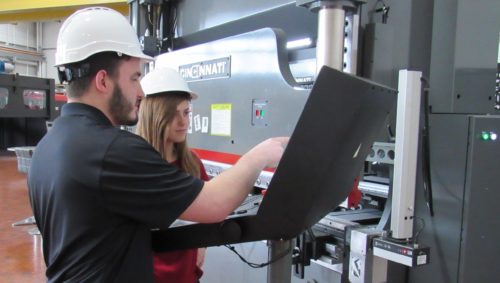EC: Bedrock Ethernet I/O Module (SIO4.E), software configurable IIoT enabler
Network Integration — I/O systems: Software-configurable, the 5-channel SIO4.E Ethernet module is a powerful enterprise IIoT enabler with military-grade, embedded cyber security. Multi-concurrent protocol translation simplifies aggregation/integration of production data with enterprise applications and strategies. This is a Control Engineering 2017 Engineers’ Choice Awards Finalist.
Ethernet is being increasingly adopted for open ICS applications. It builds on proven, enhanced high-speed stacks for industrial devices such as robots, PLCs, and sensors. The Bedrock SIO4.E Ethernet I/O module extracts maximum Ethernet versatility and delivers open connectivity benefits—while all but eliminating cyber vulnerability.
Each of the five I/O channels is independently software configurable, delivers power over Ethernet (PoE), and can run concurrently. Supported Ethernet protocols include EtherNet/IP, Modbus TCP, and OPC UA on TCP IP. Future industrial protocols such as Profinet, DNP3 and IEC61850 are planned. Bedrock’s unrivaled computing horsepower and advanced electronics simplify integration into real-time communications, analytics and control strategies—a key consideration for IIoT strategies.
Unlike a traditional Ethernet switch, which sits at the operations or business layers, the SIO4.E module delivers Ethernet as secure I/O at the process layers, closer to the sensor, actuator and process control logic. This collapses the legacy hierarchical ICS model into a simplified and inherently more secure automation architecture. Equally empowering is the deployment of OPC UA on any of the SIO4.E Ethernet I/O channels, opening up a world of opportunity and innovation while reducing software lifecycle cost.
基岩保证以太网在多个层面的I / Os, including by connecting the FIPS compliant anti-tamper SIO4.E I/O module on the pinless electromagnetic backplane of the Bedrock control system, embedding authentication logic, true random number generation (TRNG) and cryptographic keys into the semiconductor hardware and by isolating information flow within each channel by separating kernel functionality in a secure real-time operating system.
The results are real-time communication channels that improve the exchange of data between OT production and IT enterprise systems—one of the key objectives of an IIoT strategy. No other I/O module allows process engineers to program so much communications capability into a single system component.
Bedrock Automation,www.bedrockautomation.com
Do you have experience and expertise with the topics mentioned in this content? You should consider contributing to our CFE Media editorial team and getting the recognition you and your company deserve. Clickhereto start this process.






